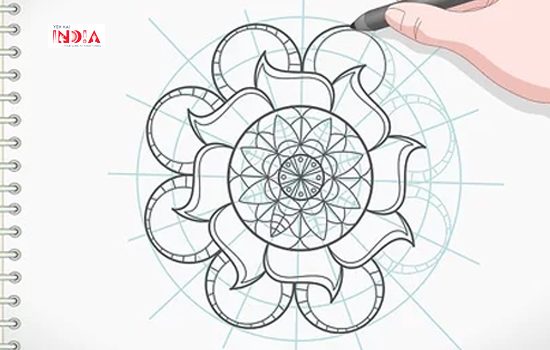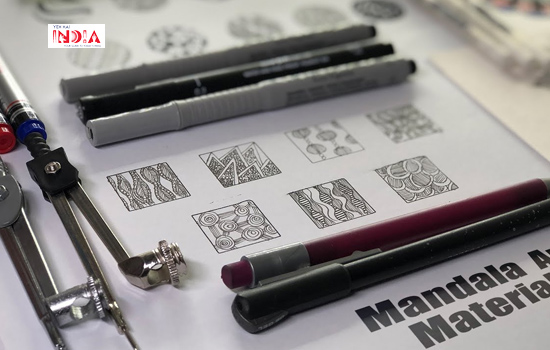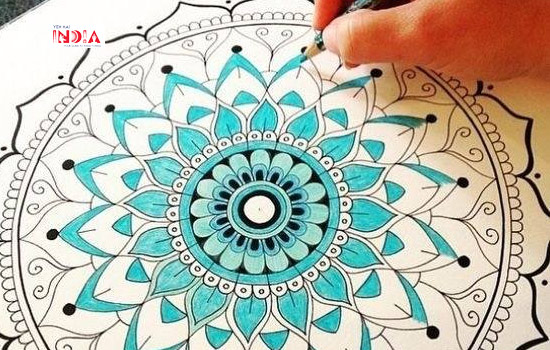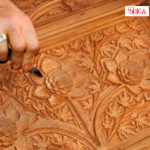This blog would answer all your queries on how to make your own Mandalas and you could easily destress your lives using these Mandalas.
MORE ABOUT MANDALAS
Our earlier article dealt with a sneak peek on Mandala art therapy and its healing benefits. As we see stress has wreaked havoc on our lives. Stress is like a canker which is gnawing the society leading to health issues. This stress is afflicting both young and old alike.
The lines of the poem “Leisure” by William Henry Davies befits us.
What is this life if, full of care,We have no time to stand and stare
We saw how the mandala art therapy could act as a stressbuster. Now there might be several queries in the reader’s minds how they could procure these mandalas.
- Could they purchase them?
- Would they be available in markets or online?
- Could they DIY?
- Are there any workshops to learn more about these mandalas?
People who want to create their mandalas can do so with ease. One doesn’t need to be an artist to create a mandala. A few simple rules are followed to create a mandala grid.
Recommended Story – Mandala Art Therapy and Its Healing Benefits
Creating your mandala

Step by step creation of a mandala-
1. Choice of materials:
One can design a mandala using just any kind of material. One can use paper and pens/pencils/paintbrushes to draw a mandala, one can mould one or carve one into clay/dirt/sand, or even one can create a mandala out of rocks, crystals, flowers, and other materials directly from nature. There are endless possibilities
2. One needs to create a sacred space:
Where one chooses to create one’s mandala is an important aspect. One should create an ambience before starting on the project. This can be done with relaxing music, incense, candles, or aromatherapy. One should select a place where one won’t be interrupted, and where one can feel comfortable expressing oneself.
3. Being relaxed and having an open mind:
Creating a personal mandala is an intuitive process, so one should start working with a tranquil mind. One should begin with a brief meditation, some breathing exercises, and some chanting to declutter the mind and surrender oneself to the Divine. The more relaxed one is, the easier the inspiration will flow!
4. Create one’s circle:
Each mandala begins with a circular shape of some kind, so it’s often easiest to begin there. One should try to close one’s eyes and focus one’s attention inward as one begins to create the mandala.
5. Select one’s muse:
One should decide the colours, theme and symbols before embarking on this sacred project. One’s intuition and creativity help in creating this art.
6. One should add a title and creation date:
Creating one’s mandala is a work of art, which deserves a title, just like any other art piece. After adding a title to the creation one should add a date to make them more memorable. Since these mandalas reflect a person’s state of being at any given moment, it’s a wonderful idea to be able to reference them, like a visual diary! For mandalas crafted on rocks and stones, photographs should be taken and notes added at the footer.
7. Reflect on your mandala message:
After the completion of the mandala creation, one should step back from the design and observe what you see. Whether certain colours or shapes are predominant in the creation? One will be able to get the answer to such questions from the Divine wisdom! One should jot down these observations in a journal so that one can reflect on them further.
Main requirements for a mandala to be drawn on a paper are

- Pencil
- Paper
- A ruler
- compassMarkers, coloured pencils or pens
- Protractor
How to draw the mandala

1. Using the compass one should draw a small circle in the centre of the paper.
2. Using the small circle as the centre point, draw consecutively bigger circles around the first one. The circles need not be equidistant but should start from the centre point.
3. Once the circles are drawn, a vertical line should be drawn down the middle of the circles in pencil. (these will be erased later on)
4. Now a horizontal line is drawn through the middle to create a plus sign.
5. These pieces can be split up into further parts. One can split these into as many parts as one likes but all the wedges must be of the same size. This grid serves as a guideline to make the mandala.

6. Starting from the centre, one can draw whatever shape one wants inside the first wedge. The same shape can be repeated in the wedge next to it, and the one next to that one, and so on, rotating the page as one draws until all the wedges are drawn.
7. One should keep working one’s way outward using the circles and lines as markers. This helps in keeping the symmetry in the mandala. One should keep drawing the same shape in each wedge and working outward every time one completes a full circle.
Some people might find it tedious to draw these mandalas but would like to use them for therapeutic purposes can buy them online from the following sites:
- amazon.com/Mandala-Art/
- www.indigalleria.com
- engrave.in
- artzolo.com
- wallmantra.com
Now some of you might get interested in learning more about mandalas and their therapeutic effects. There are several workshops in India where one can learn about mandala therapy in detail.
Mandala workshops

What is taught in these workshops?
Mandala workshops will help a person learn what a mandala is and will get a demonstration on how to construct the outline of a mandala with some fine markers to create a beautiful design.
One can attend these workshops in big cities like Delhi, Bombay, Bangalore etc. But if you live in a small city or town do not fret you can attend workshops online. Sites like-
Hope this blog has helped our readers and they will enjoy the mandala art therapy and reap the benefits of this therapy.











Mandala are indeed therapeutic!! Thank you for putting the information in such detailed yet simple manner it makes it easy to understand its impact on our well being.